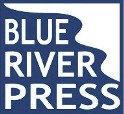Creative Minds
A Regular Column by Anthony D. Fredericks
Creativity as a Corporate Goal
 Many business leaders subscribe to a belief that in order to stay competitive in an ever-changing world, they must embrace creativity and innovation as primary goals of an organization. A creative environment engenders new ideas, products, and approaches that can solve problems and offer goods and services that meet the immediate needs of a sometimes fickle buying public. To support that perception, IBM conducted a Global CEO Study several years ago. 1,541 chief executives, general managers, and public-sector leaders across thirty-three industries and sixty countries around the globe were surveyed. Approximately 60 percent of those executives cited creativity as the most important leadership attribute needed for future success.
Many business leaders subscribe to a belief that in order to stay competitive in an ever-changing world, they must embrace creativity and innovation as primary goals of an organization. A creative environment engenders new ideas, products, and approaches that can solve problems and offer goods and services that meet the immediate needs of a sometimes fickle buying public. To support that perception, IBM conducted a Global CEO Study several years ago. 1,541 chief executives, general managers, and public-sector leaders across thirty-three industries and sixty countries around the globe were surveyed. Approximately 60 percent of those executives cited creativity as the most important leadership attribute needed for future success.
Yet, in spite of an overwhelming embrace of creativity as a significant factor in the success of a business or organization, many companies have practices and principles in place that actually crush the creative spirit of their employees and seriously hamper the generation of new ideas and dynamic change. Indeed, there is a plethora of tales in which well-respected firms actively work against creative expression on an almost daily basis. In short, far too many businesses “talk the talk, but don’t walk the walk.”
In his seminal book, Where Good Ideas Come From: The Natural History of Innovation Steven Johnson makes a compelling case, not just for the generation of creative ideas, but also for the habitats that stimulate, foster, and enhance creativity in the first place. It is his contention that specific types of environments are necessary in order for creativity to prosper. These environments, according to Johnson, may encompass diverse locations including the office, nature, the home, or through an interaction with media. He caps his thesis with a most profound thought, “On a basic level, it is true that ideas happen inside minds, but those minds are invariably connected to external networks [physical environments] that shape the flow of information and inspiration out of which great ideas are fashioned.”
How’s your work environment?
[ ] Creatively supportive
[ ] A creative desert
__________________
 Dr. Anthony D. Fredericks is an award-winning author of more than 170 books, including the highly anticipated From Fizzle to Sizzle: The Hidden Forces Crushing Your Creativity and How You Can Overcome Them as well as five other Blue River Press titles (e.g. Ace Your Teacher Interview – 3rd Ed.). He also pens a regular blog for Psychology Today.com (https://www.psychologytoday.com/us/contributors/anthony-d-fredericks-edd)
Dr. Anthony D. Fredericks is an award-winning author of more than 170 books, including the highly anticipated From Fizzle to Sizzle: The Hidden Forces Crushing Your Creativity and How You Can Overcome Them as well as five other Blue River Press titles (e.g. Ace Your Teacher Interview – 3rd Ed.). He also pens a regular blog for Psychology Today.com (https://www.psychologytoday.com/us/contributors/anthony-d-fredericks-edd)

